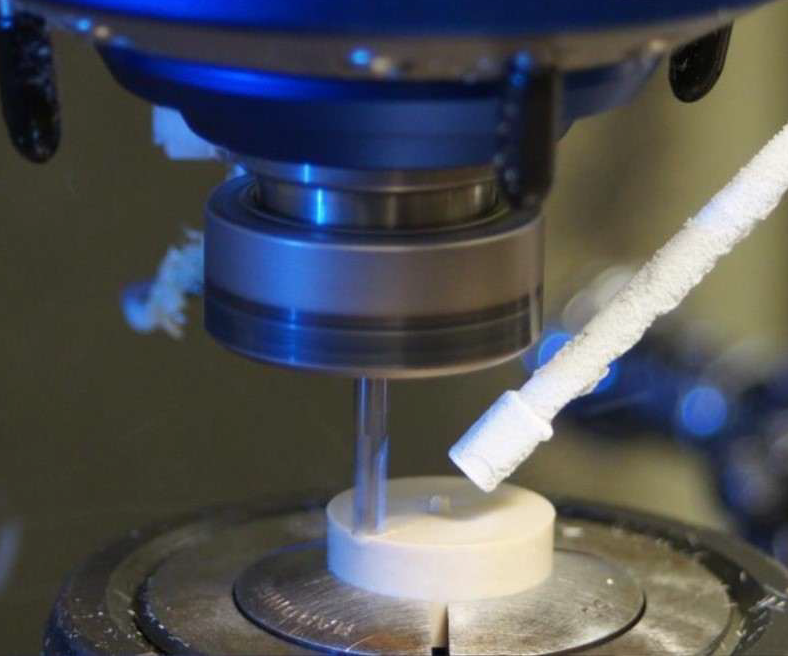
Industrial Cryotech’s new CryoCut Vista system was designed for the machining of high-performance thermoplastics. For use in CNC machines, the company says the CryoCut Vista cryogenic technology delivers precise cooling to the cutting zone, enabling clean, burr-free machining of polymers often used in aerospace and medical applications.
CryoCut technology was originally developed to facilitate improved machining characteristics and tool life when machining hardened steel & iron, powdered metals, cobalt chrome and even carbide thermal spray coatings.
“There has been unrelenting demand from customers that are involved in precision machining of thermoplastics polymers” said company Chief Technology Officer Rick Knopf.

Using liquid nitrogen, CryoCut Vista maintains the point-of-cut at temperatures as low as -50°F, improving material stiffness and reducing thermal distortion. This results in enhanced dimensional accuracy—with tolerances down to 0.000039" — and a 20% improvement in surface finish quality.
The system’s smart digital interface allows operators to easily control and maintain temperature within ±2°F. Once activated via M-code, a stream of nitrogen flows through stainless steel nozzles, creating an inert, residue free cutting environment. This not only enhances process stability but also aligns with sterility and biocompatibility standards required in medical manufacturing.
In testing, the system demonstrated up to a 500% reduction in operational coolant costs thanks to efficient nitrogen use. As nitrogen makes up 78% of Earth’s atmosphere, CryoCut Vista also delivers a sustainable machining solution.
“Precision machining plastic is fraught with challenges,” says Rick Knopf, many of which revolve around preventing material from reaching the “rubbery” melt zone from heat generated in cutting. “With CryoCut Vista we can control & prevent this at the point of cut, the results are increased output and reduced burr formation.”
Contact Details
Related Glossary Terms
- burr
burr
Stringy portions of material formed on workpiece edges during machining. Often sharp. Can be removed with hand files, abrasive wheels or belts, wire wheels, abrasive-fiber brushes, waterjet equipment or other methods.
- computer numerical control ( CNC)
computer numerical control ( CNC)
Microprocessor-based controller dedicated to a machine tool that permits the creation or modification of parts. Programmed numerical control activates the machine’s servos and spindle drives and controls the various machining operations. See DNC, direct numerical control; NC, numerical control.
- coolant
coolant
Fluid that reduces temperature buildup at the tool/workpiece interface during machining. Normally takes the form of a liquid such as soluble or chemical mixtures (semisynthetic, synthetic) but can be pressurized air or other gas. Because of water’s ability to absorb great quantities of heat, it is widely used as a coolant and vehicle for various cutting compounds, with the water-to-compound ratio varying with the machining task. See cutting fluid; semisynthetic cutting fluid; soluble-oil cutting fluid; synthetic cutting fluid.
- precision machining ( precision measurement)
precision machining ( precision measurement)
Machining and measuring to exacting standards. Four basic considerations are: dimensions, or geometrical characteristics such as lengths, angles and diameters of which the sizes are numerically specified; limits, or the maximum and minimum sizes permissible for a specified dimension; tolerances, or the total permissible variations in size; and allowances, or the prescribed differences in dimensions between mating parts.
- stiffness
stiffness
1. Ability of a material or part to resist elastic deflection. 2. The rate of stress with respect to strain; the greater the stress required to produce a given strain, the stiffer the material is said to be. See dynamic stiffness; static stiffness.
